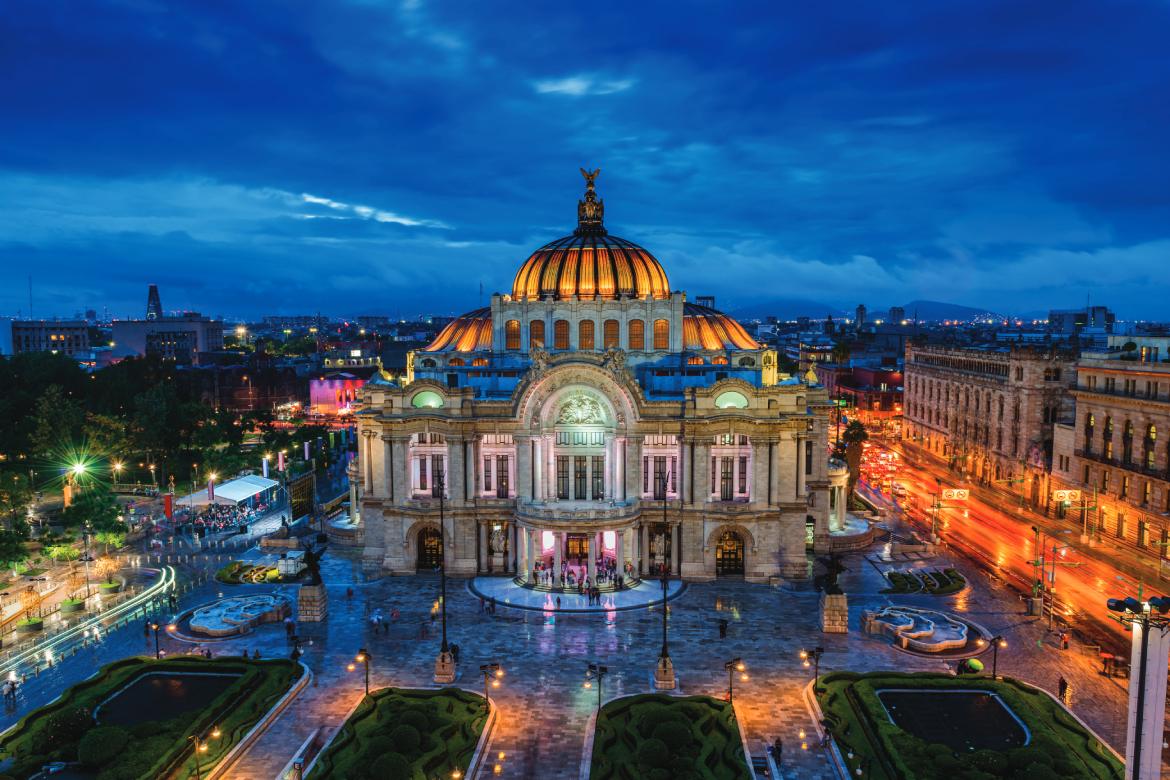As the first major Latin American city to legalize same-sex marriage (way back in 2010), Mexico City has long been a hub for LGBTQ travelers looking for liberal, big-city sophistication.
Since the onset of the pandemic, this fast-paced city, which is also known by its nickname, CDMX, has attracted an even more devout following, as thousands of people from the United States and Canada took advantage of remote working policies to temporarily relocate to North America’s largest city.
Happily, I’m one of the people who moved my home office to Mexico City during the pandemic. As a freelance travel writer, I can work from anywhere, but my husband was the one who suddenly found himself with the freedom to work from a different location, and Mexico City was an easy choice.
During our time in Mexico City, we came to appreciate the destination even more, as we spent months exploring its inviting outdoor cafes, mouthwatering cuisine, tree-lined streets, historic architecture, extensive cultural offerings, vibrant LGBTQ nightlife, and richly creative vibe, which attracts some of the hemisphere’s most creative people.
“The city has evolved to become an inclusive place where it’s easy to express oneself, to express our preferences, desires, sexuality, experiences, and realities,” says Pablo Gomez, an actor who moved from Costa Rica to Mexico City in 2007, and as of press time was performing in a big-budget production of Aladdin (Mexico City is a great place to see live theater, by the way). “I see an even greater freedom of expression than when I first arrived in the city. It was never a backwards city, quite the opposite, but today I see that people in our community live even freer.”
Fernando Castillo Gonzalez, owner of Condesa Haus, a boutique hotel in one of the city’s chicest neighborhoods, agrees about recent progress. “The LGBTQ community has rapidly gained more respect and tolerance in Mexican society within the past 10 years,” he says. “We’re a very inclusive city, where everyone from government institutions to civil associations protect the rights of LGBTQ people. In addition, it’s a city with a lot of history, gastronomy, and LGBTQ nightlife like few cities in the world.”
Indeed, there are lots of reasons why travelers love Mexico City, according to Gomez. “Mexico City is perfect for everyone, not just LGBTQ people, because of its wide range of cultural offerings,” he says. “It’s a city of possibilities, with movie theaters, shopping malls, concerts and large events, as well as cultural activities like museums, theaters, archeological and historic zones.”
“There’s also a lot of nightlife and theme parties for the LGBTQ community, neighborhoods where people can feel safe and many people speak English as well as Spanish, and that helps tourism,” Gomez adds. “The city has a lot to offer.”
With so many possibilities, it’s easy to craft a Mexico City vacation tailored to your own interests.
EXPLORING HISTORY AND CULTURE
Fans of history, architecture, and culture will find lots to do in Mexico City. The best place to start, from a chronological perspective, is the Centro Histórico (the historic city center), which is centered around the Zócalo, the world’s second-largest city square, second only to Moscow’s Red Square.
Standing in the middle of the sprawling Zócalo, you can view several important landmarks representing different aspects of the city’s history. A few yards away is the Museo del Templo Mayor, which is set partially in the remains of an Aztec temple; it’s a must-see for anyone interested in the city’s pre-colonial history. Founded around 1325 by the Mexica Aztecs as Tenochtitlan, the city was a thriving metropolis built on multiple islands in Lake Texcoco.
The Spanish must have been impressed with what they saw upon arriving at Tenochtitlan, but like most European colonialists arriving in the Americas at the time, they set out to conquer the region, destroying most of the original city and rebuilding what would become Mexico City, which served as a hub of power for a large part of Spain’s colonial empire before becoming the capital of an independent Mexico in 1810. Key landmarks from the colonial era includes the Catedral Metropolitana (Metropolitan Cathedral), which dates to 1573, and the 17th-century Palacio Nacional (National Palace).
A stroll down Calle Madero, a bustling pedestrian street lined with stores large and small, leads to one of the city’s most beautiful examples of 20th-century architecture: the Palacio de Bellas Artes (Palace of Fine Arts), a gorgeous cultural center with Art Deco, Art Nouveau, and Neoclassical architectural touches. Even if you can’t catch a performance of the Ballet Folklórico (Folkloric Ballet) here, it’s worth a visit just to admire the architecture, check out the excellent gift shop, and view the murals by legendary Mexican artists Rufino Tamayo, José Clemente Orozco, and David Alfaro Siqueiros. Just across the street, the Palacio de Correos (Postal Palace), is probably unlike any post office you’ve seen before, with its grand staircases and ornate, early-20th-century design.
Also located downtown is Plaza Garibaldi, which serves as the city’s hub for mariachi performers, complemented by the Museo del Tequila y Mezcal (Tequila and Mezcal Museum), where visitors learn about Mexico’s famed spirits.
Mentioning museums in Mexico City, of course, is always a challenge because it’s impossible to include all of them. According to some reports, Mexico City has more museums than any city on earth, except perhaps London. You can find cultural institutions dedicated to just about any topic you can imagine, from fine art to military history to shoes to vintage toys. As you determine which museums best fit your own interests, one should remain at the top of your list: the Museo Nacional de Antropologia (National Museum of Anthropology), which is widely regarded as one of the world’s best anthropology museums. You could spend an entire day or more exploring its vast collections of pre-Hispanic artifacts.
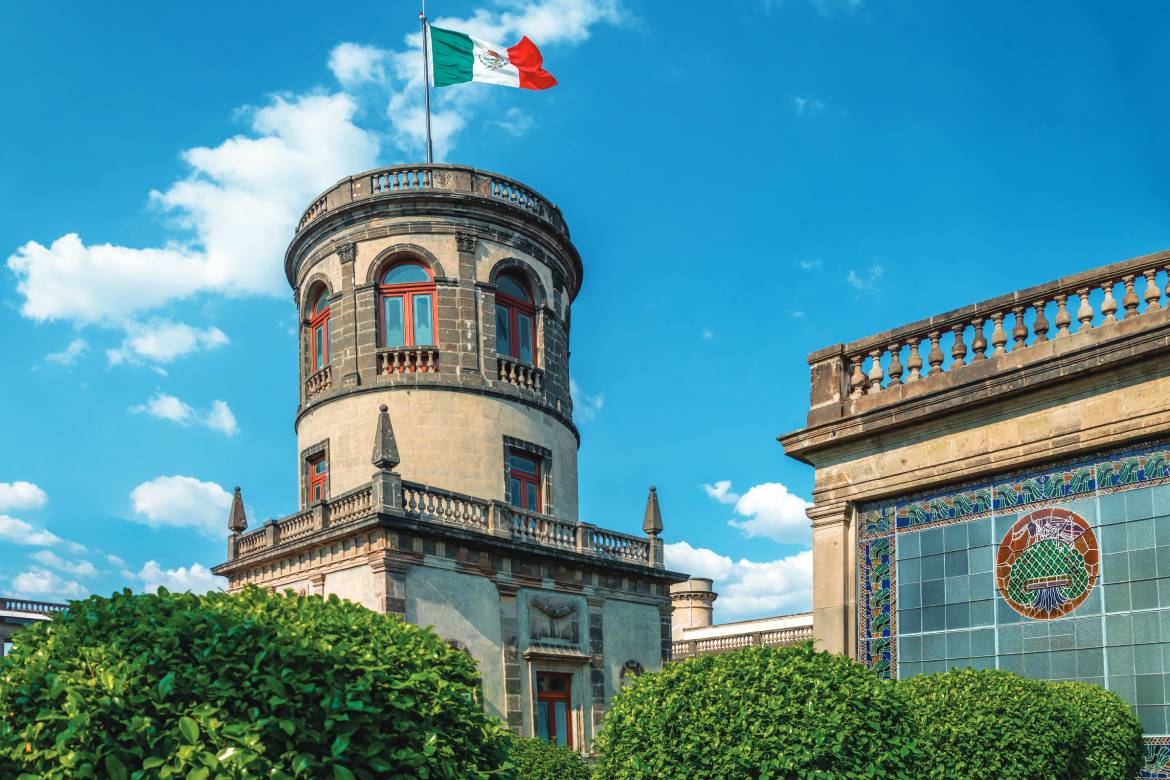
Chapultepec Castle (Photo by Diego Grandi)
The anthropology museum is located in Bosque de Chapultepec, the city’s largest park, which is also home to several other noteworthy cultural institutions, including the Castillo de Chapultepec (Chapultepec Castle), a gorgeous structure built in the 18th and 19th centuries that’s home to the Museo Nacional de Historia (National History Museum). Also worth checking out in the park are the Museo Rufino Tamayo (Rufino Tamayo Museum) and the Museo de Arte Moderno (Modern Art Museum), both of which host exhibitions of modern and contemporary art.
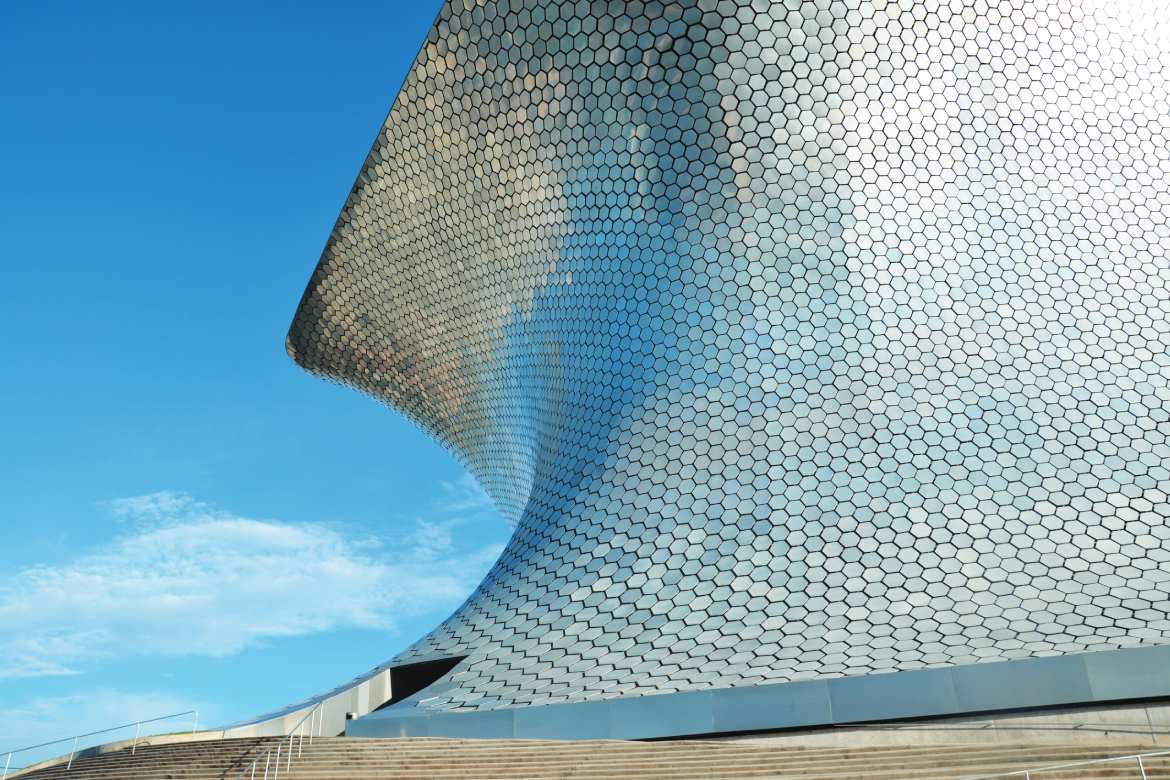
Museo Soumaya (Photo by Mexico Tourism Board)
We spent months exploring its inviting outdoor cafes, mouthwatering cuisine, tree-lined streets, historic architecture, extensive cultural offerings, vibrant LGBTQ nightlife, and richly creative vibe.
Art lovers should also plan a trip into the upscale neighborhood called Polanco, for a stop at the Soumaya and Jumex museums; the Soumaya is especially striking, with its curved façade constructed with more than 16,000 aluminum hexagons. And, of course, no visitor with an appreciation of the arts should visit Mexico City without a trip to Coyoacán, a tranquil neighborhood where the Casa Azul (Blue House) is a fascinating museum set in the former home of legendary artist Frida Kahlo. You can also learn about Kahlo’s work, as well as that of her equally famous husband, Diego Rivera, at the Museo Casa Estudio Diego Rivera y Frida Kahlo (Diego Rivera/Frida Kahlo House Studio Museum), which served as a home to both artists and now offers a glimpse at their lives.
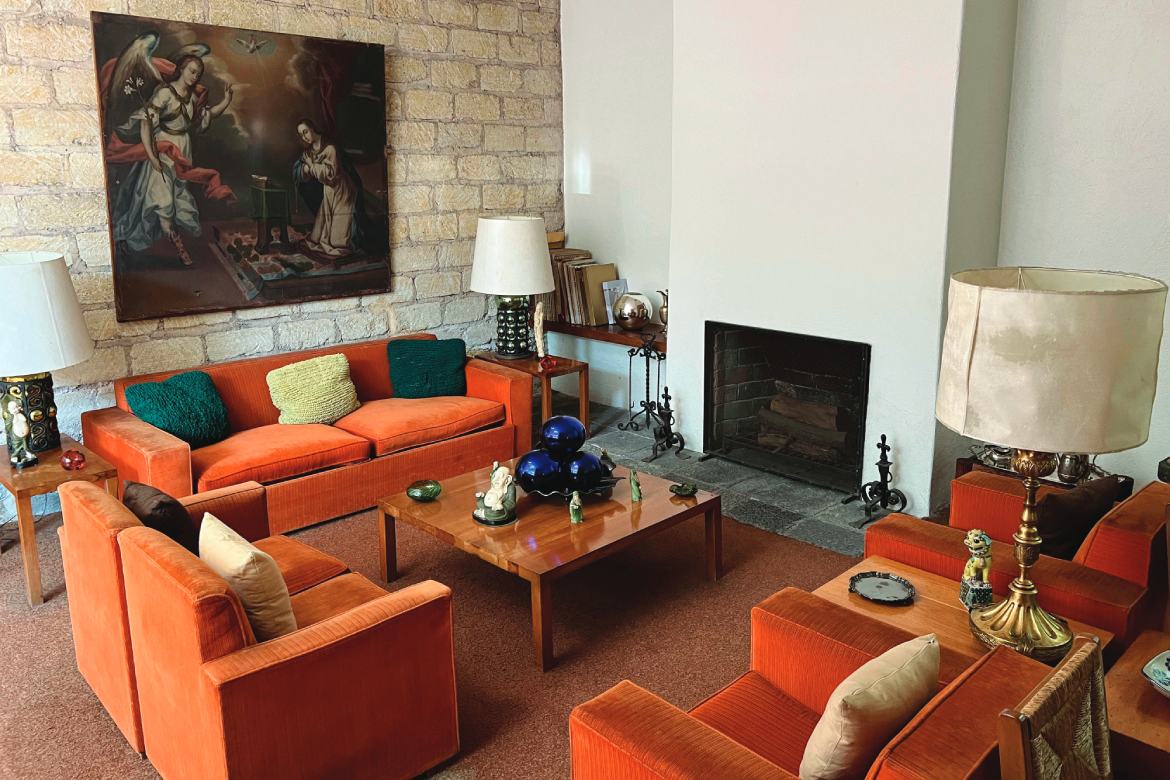
Casa Ortega
Followers of 20th-century creativity, and especially architecture, should also consider viewing works by Luis Barragán, one of the nation’s most revered architects. His former residence, Casa Luís Barragán, appears in the UNESCO World Heritage List, and taking a guided tour of his home, which dates to 1948, provides an interesting look at his unique approach to design, although it may not shed much light on his personal life. According to some reports, the deeply religious Barragán, who died in 1988, may have been a closeted gay man. Next door, you can see more of his work at Casa Ortega, which dates to 1942 and is also open for guided tours by appointment. The architect’s devotion to Catholicism, meanwhile, can be witnessed at the Capilla de las Capuchinas (Chapel of the Capuchins), the most fascinatingly modern convent I’ve ever toured in the company of a nun.
Also worth a visit is Xochimilco, a neighborhood laced with pre-Hispanic canals that were once a major source of transportation and commerce for communities in the region. Today, the lakes and many canals have disappeared, and what’s left is a rather festive attraction, with colorful trajineras (traditional flat boats) plying the waters and offering opportunities for riders to listen to live music while enjoying food and drinks; it’s an especially popular activity for groups and celebrations.
Exuding a much more historical vibe is Teotihuacán, an archeological complex northeast of the city that’s known for its group of gigantic, well-preserved ruins, including the iconic Pyramid of the Sun and Pyramid of the Moon. Depending on traffic, you’ll probably need the better part of a day to experience this worthwhile side trip. Guided group excursions often also include a stop at the Basilica de Guadelupe, a massive church complex and pilgrimage site that honors the country’s patron saint, the Virgin of Guadelupe. You’ll make better time if you arrange a privately guided visit to the pyramids or simply take a bus and visit on your own. To make it even more memorable, you can arrange to view the pyramids from a hot-air balloon at sunrise; most large hotels will make the arrangements for you.
ENJOYING LGBTQ LIFE
As one of Latin America’s most progressive destinations, Mexico City offers myriad opportunities to connect with LGBTQ life and culture. The city is especially rainbow-hued during the annual Mexico City Pride parade and festival (Marcha del Orgullo LGBT de la Ciudad de México), which takes place on the last Saturday in June. Thousands march along Paseo de la Reforma, the broad boulevard that cuts through the center of the city, ending at the Zócalo for a lively festival that includes live music and other performances. Additional annual events that showcase some amount of LGBTQ creativity are the Día de los Muertos (Day of the Dead) parade, which takes place in late October or early November, and the World Naked Bike Ride, which takes place in mid-June.
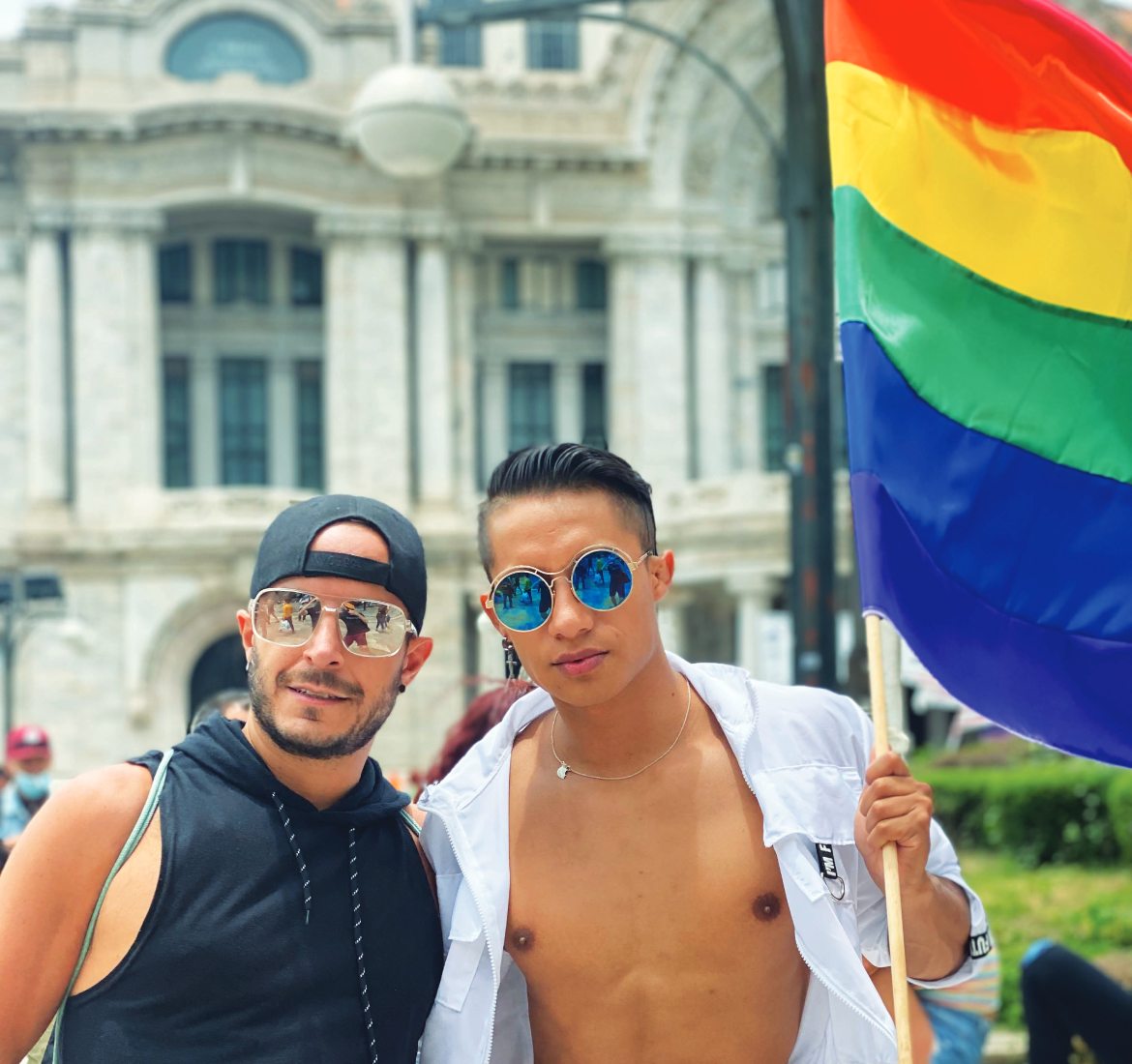
Mexico City Pride (Photo by Mark Chesnut)
When it comes to year-round LGBTQ-specific fun, Mexico City offers a diverse array of nightlife. After-work happy hours at gay bars aren’t really a thing in Mexico City, but you can find just about everything else, from laidback hangouts to sidewalk cafés to large discos, trendy nightspots, and stripper bars. And, given the city’s accepting and welcoming attitude, it’s not uncommon to see queer couples at “mainstream” establishments, especially in fashionable neighborhoods like Condesa and Roma Norte, where hip bars and restaurants are the norm.
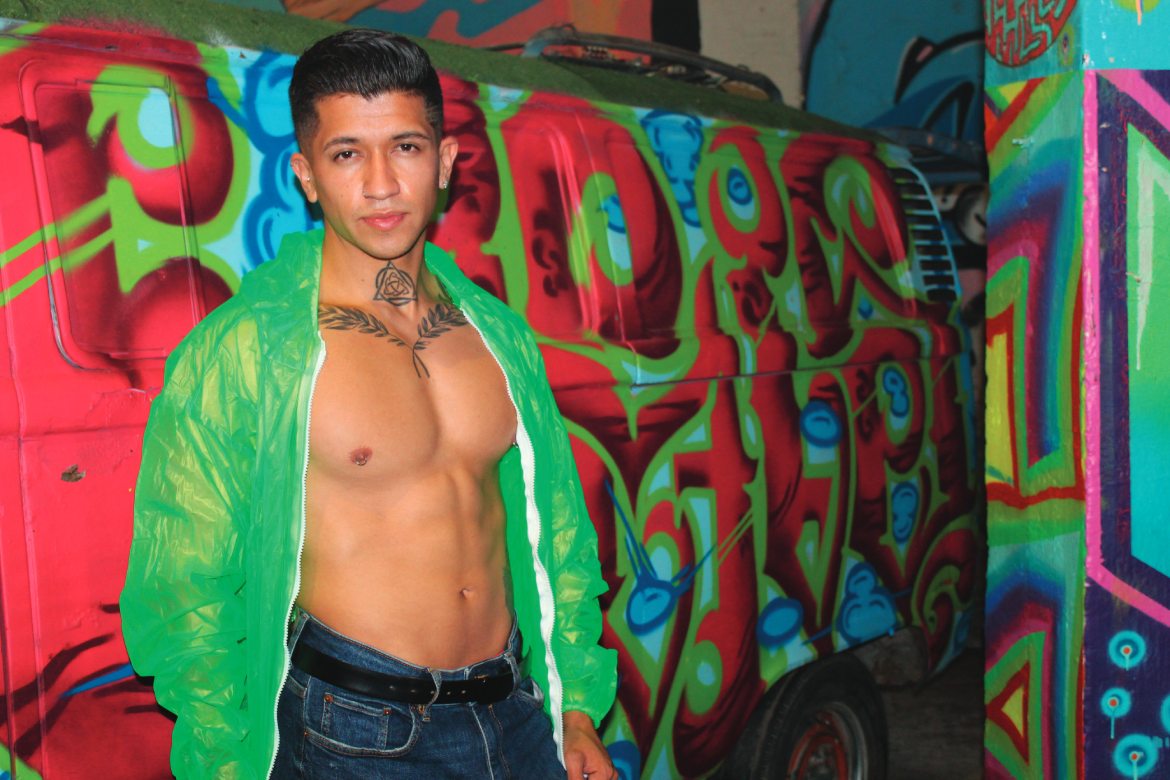
Joel at Ex Fabrica MX (Photo by Mark Chesnut)
There are also some interesting venues in other areas of the city, including Ex Fabrica MX, a former flour mill and abandoned factory that’s been reborn as a cultural center for music, art, food, and events. Its heavily muraled walls are also great backdrops for selfies and photo shoots, as I found while shooting Octavio and Joel, two attractive male fitness models.
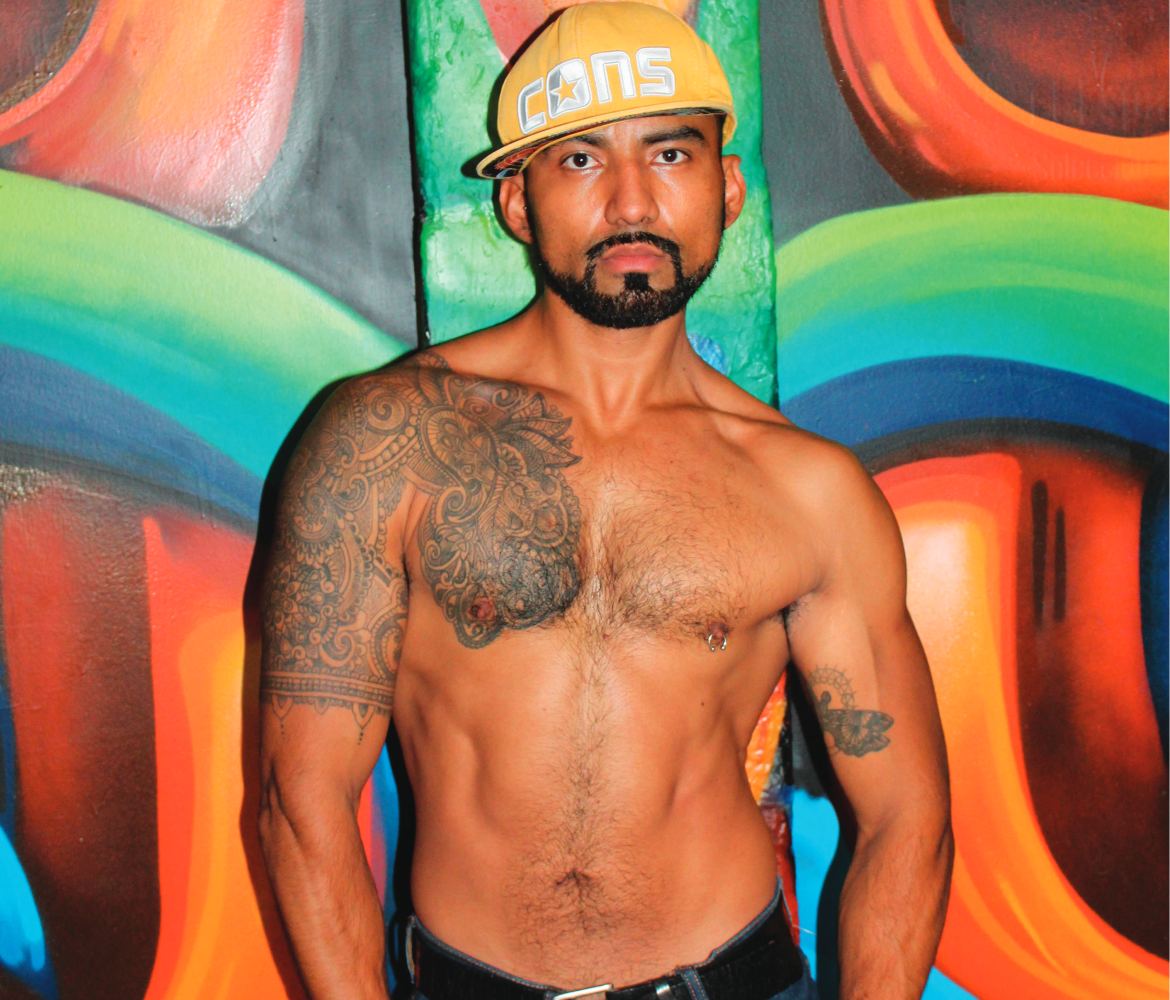
Octavio at Ex Fabrica MX (Photo by Mark Chesnut)
By far, the neighborhood with the largest concentration of LGBTQ nightlife is the Zona Rosa, which is centrally located along the Paseo de la Reforma, near the iconic Angel de la Independencia, a much-photographed Mexican independence monument topped by a glistening gold statue of an angel. You might want to start your visit to the Zona Rosa with an afternoon or early-evening visit to Somos Voces, a wonderful LGBTQ bookstore and café that stocks a diverse array of titles and also hosts book readings and cultural events.


